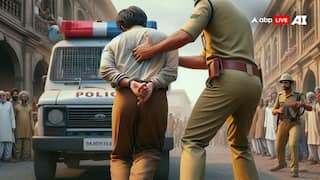Bold Brushstrokes To Power Of Words: How Art And Culture Shaped Freedom Struggle Of India
Discover how art, culture, festivals, songs, literature, and visual imagery fueled India's struggle for independence, igniting patriotic spirit and forging a united identity.

New Delhi: India stands at the threshold of celebrating its 77th Independence Day, an occasion of profound historical and cultural significance. As the nation gears up to mark 76 years since breaking free from British colonial rule, the spirit of patriotism and the courage displayed by those who championed India's independence not only reverberates across the country but also resonates globally. The freedom did not come only due to the efforts of those who hit the streets or those who took up arms, a big role was also played by those who used art and culture to fight the battle.
Role Of Art & Culture During India's Struggle
Art and culture played an indispensable role during India's pivotal struggle for freedom, acting as catalysts, weaving together the diverse tapestry of Indian society and fanning the flames of nationalism.
"Throughout history, art and culture have bridged the gap between the public and broader issues that go beyond their daily routines. This is especially evident in India's struggle for independence," says Katyayini Singh, former guest lecturer at the University of Delhi.
According to her, there was a profound impact of cultural celebrations such as Ganpati Chaturthi and Durga Puja, which prominent leaders revitalised in order to instill cultural and national pride. These events, she notes, transcended mere success, becoming powerful vehicles of unity and assertion.
"Local cultural festivities such as 'Ganpati Chaturthi' and 'Durga Puja' were revitalised by prominent leaders to instill a sense of cultural, and in turn, national pride. Describing it as merely successful would be a massive understatement," she tells ABP Live.
A Tapestry Of Expression: Unifying Masses Through Culture
Dr Madhuri Sharma, a faculty member in the History department at Bharati College, University of Delhi, feels art and culture were unifying forces that bridged gaps between diverse communities, transcending linguistic and regional barriers.
"Culture is a way of life which we perform every day. This includes food habits, clothing, festivals, rites and rituals, language, mannerism, and art, among other things. Art is a cultural expression. Art can be seen as a creative form of expression against colonial rule and their atrocities in modern India (1757- 1947)," she says.
"This expression can be divided into ORAL (songs/poems) and VISUAL (paintings/advertisements) forms, as well as print literature in the forms of drama, stories, and so on. During the Indian national movement and the freedom struggle, art and culture played a critical role in spreading national sentiments and fighting colonial rulers."
The Power Of Words In Inspiring Change
According to Archan Mitra, Assistant Professor at the School of Media Studies, Presidency University, Bangalore, poets and writers skillfully wielded the written word to ignite the flames of nationalism. Iconic figures like Rabindranath Tagore and Bankim Chandra Chattopadhyay crafted verses that echoed the spirit of freedom.
"In the domain of literature, various poets and writers used their literary prowess to ignite a sense of nationalism. Rabindranath Tagore's works played a key role in galvanising the Indian people. Other literary figures like Bankim Chandra Chattopadhyay penned verses that became synonymous with the freedom movement," he says.
'Neel Darpan', a drama by Din Bandhu Mitra, roused sentiments against British oppression, becoming an anthem of freedom, says Dr Sharma, adding how folk traditions and songs united rural populations in the fight for freedom. These cultural expressions, rich in history and heritage, served as potent tools to educate and inspire people across the country.
"Newspapers and journals played a creditable role in building public opinion in favour of national interest and against colonial administration inequities. English, Hindi, and Urdu newspapers such as Amrit Bazar Patrika, Hindu patriot, Som Prakash, Indu Prakash, Native Opinion, Bharat Mata, Jam-e-jahan nama etc. Dada Bhai Naoroji- Talking about the 'Drain of wealth' in his writings," she says.
Bold Brushstrokes And Songs Of Protest
Visual arts, too, contributed significantly. Prof Mitra says artists like Abanindranath Tagore and Nandalal Bose harnessed indigenous styles to create works that evoked a strong sense of national identity and pride. "Paintings and visual arts were not behind in contributing to the freedom struggle. Artists like Abanindranath Tagore and Nandalal Bose used indigenous styles to create works that evoked national pride and a sense of identity," he tells ABP Live.
Folk traditions were crucial in rallying the masses. Indians from all over the country found their voices against British oppression through folk songs and theatrical performances. People were inspired to join the movement by these artistic expressions, which were deeply rooted in local culture.
Explains Dr Sharma: "Many songs were written for Hindu melas, which began in 1867 and were organised by a group of Bengali leaders to spread nationalist ideas and indigenous arts and crafts. British policies were blamed for the country's deteriorating economic situation. The importance of Swadeshi goods was also emphasised. Nationalist ideas were expressed in dramas and songs."
She adds: "The atrocities of Indigo planters, for example, were highlighted in this 1860 drama written by Din Bandhu Mitra. In 1882, Bankim Chandra Chatterjee published Bande matram in his novel Ananad math. This Vande Matram spread throughout India in the form of a song, fueling nationalist fervour."
The emerging medium of cinema was also far from passive, points out Prof Mitra. "Filmmakers, including visionaries like Dadasaheb Phalke, harnessed its power to raise awareness and drive action. Their cinematic narratives laid bare colonial atrocities, stoking the flames of resistance."
Khadi And Symbolic Allegiance
The significance of attire, including Mahatma Gandhi's adoption of khadi, was not lost on the nationalists. Clothing became an emblem of resistance, empowering individuals and transforming them into embodiments of assertion and nationalism.
From the spinning wheel, which symbolised self-sufficiency, to Gandhi's loincloth, which symbolised nationalism, these were items that encapsulated powerful messages that resonated deeply with the populace. They had a profound impact of Indian philosophy on the struggle for independence. Gandhi's nonviolence principle (Ahimsa) had its roots in this philosophy, providing a moral compass that guided the nation's path to freedom.
As Dr Madhuri Sharma puts it: "The movement for independence breathed new life into indigenous arts and culture, reclaiming them as symbols of self-reliance and national pride. Traditional art forms and crafts resurged, standing as powerful declarations of India's autonomy."
According to Dr Sharma, the national flag became a potent symbol of collective loyalty. Its transformation into a shared emblem united people emotionally, symbolising a unified fight for independence.
Katyayini Singh, however, offers a contrasting viewpoint, underscoring the nuanced nature of this achievement. "This accomplishment was not without its intricate repercussions. It frequently led to the isolation of marginalised communities and other religious groups. These attempts at national unity inadvertently fortified the beliefs of proponents of the two-nations theory. To put it quite simply, it became a two-edged sword, one that continues to shape our politics to this day."
She adds: "A glance at our contemporary political sphere reveals the persistent implementation of such tactics, carrying with them a perilous impact on the ordinary citizen."
Through fervent efforts, India's art and culture transformed into powerful tools of resistance and unity. As we reflect on history, it's evident that these cultural expressions played an instrumental role in shaping India's journey toward Independence. From the revival of indigenous arts to the literary and cinematic narratives that stirred emotions, every stroke of culture's brush contributed to the tapestry of freedom.
Trending News
Top Headlines






































